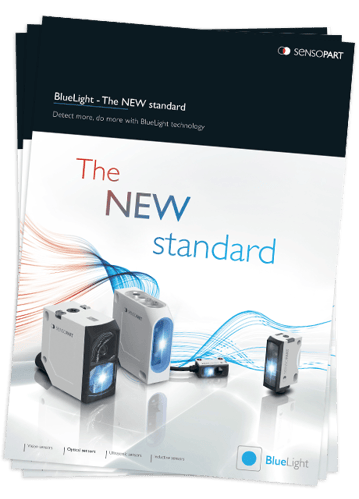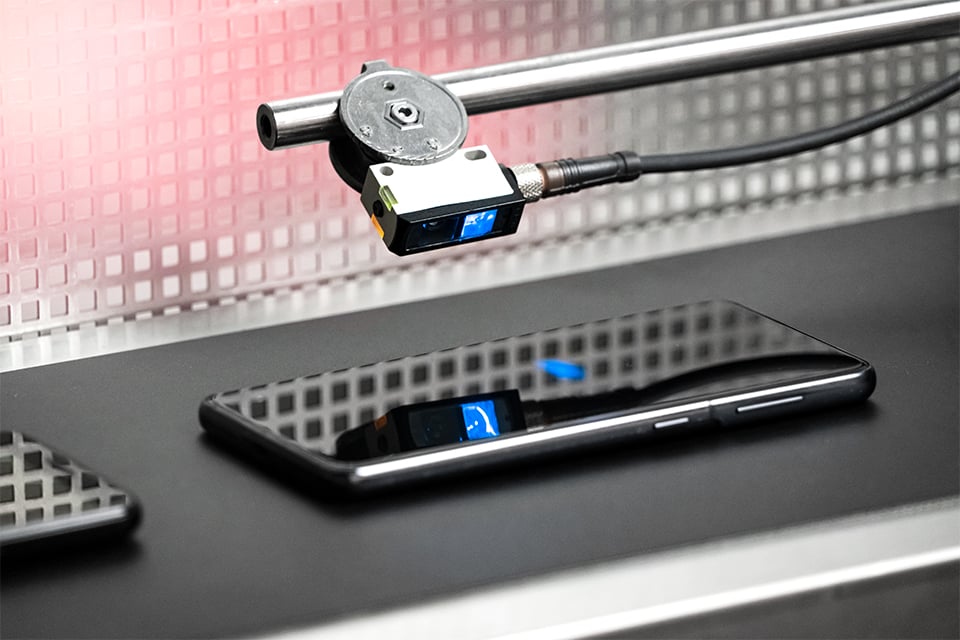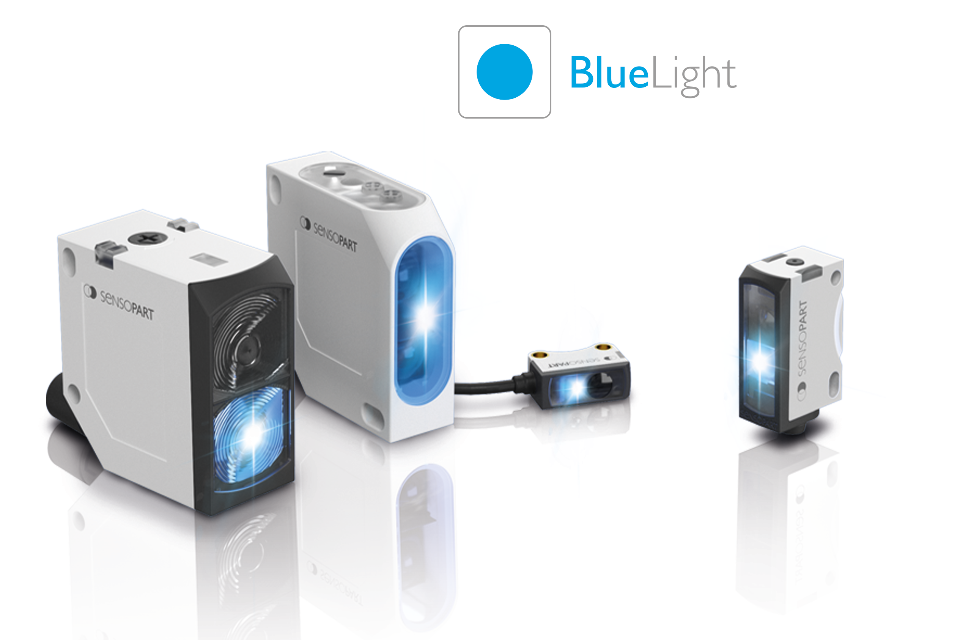What types of objects require reliable and accurate object detection?
In many manufacturing processes, reliable object detection is crucial. Parts with different shapes, colours and structures have to be detected, transported, sorted, gripped and assembled. In recent years, photoelectric diffuse sensors with blue emitting LEDs have been increasingly used in such applications. BlueLight sensors have proven themselves as real all-rounders and especially in the detection of
challenging parts.
In the automotive industry, this could be metallic and highly light-absorbing components. For packaging it could be transparent films/containers/bottles and labels. The pharmaceutical industry needs to detect the presence and positioning of shiny blister packs, and for solar it could be the presence and position of wafers.
Materials that are difficult to detect
Detecting objects with difficult or demanding materials is a real challenge for a number of industries. When red light sensors reach their limits, conventional solutions usually require investing in additional photoelectric or ultrasonic sensors.
If sufficient process stability cannot be achieved with red light, diffuse sensors with BlueLight technology can be an alternative. This is because the reflective properties of blue light can be used to significantly improve reliable detection of critical materials from metallic, dark or light-absorbing components to curved, shiny and transparent objects.
Dark Objects
Dark to deep black objects absorb so much light that red light sensors can fail to measure sufficient reflected light, therefore making them difficult to detect. These include items such as black plastic clips, dark sealing rings, components made of carbon fibres or matt black door panels.
Watch this video to see the detection of dark objects.
This video shows the detection of transparent objects.
Transparent Objects
Transparent objects, such as glass, reflect only a small part of the emitted light making them difficult to detect, causing switching signals to be ambiguous/inaccurate. Typical examples of transparent objects in industry are: clear plastic packaging, bottles made of glass or PET, ampoules and pipettes, clear foils for securing loads on pallets.
Reflective Objects
The challenge with reflective surfaces is that once the light has been sent out, it can be reflected away by surfaces such as smartphone displays so that insufficient light bounces back to the receiving element, making detection impossible. But with blue-emitting LEDs, more light is able to return to the BlueLight sensor allowing for reliable detection.
Read more about the detection of reflective surfaces in this application example.
Why BlueLight is important
When a standard red light sensor does not provide sufficiently reliable detection, a BlueLight sensor can be an economical and effective alternative compared to a photoelectric retro-reflective sensor or fiber-optic cable system. Compared to red light sensors, BlueLight sensors offer higher process stability for challenging materials, such as deep black plastic parts, curved objects or transparent foils.





